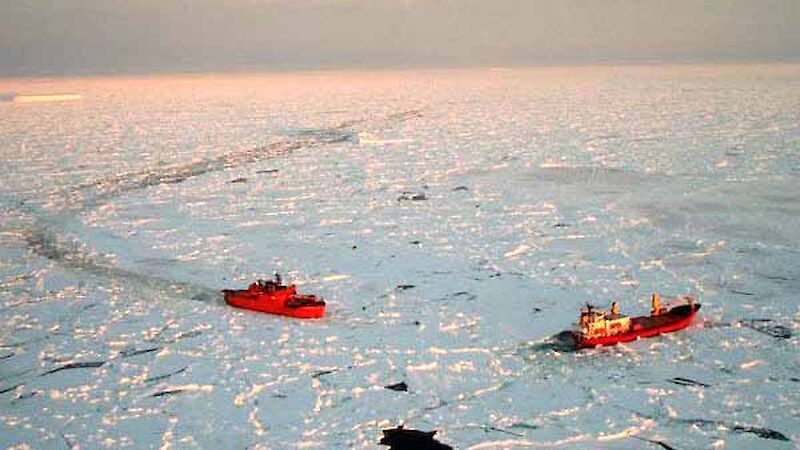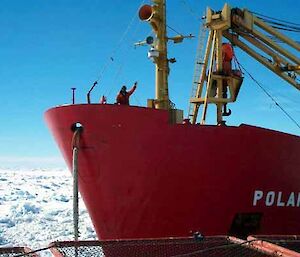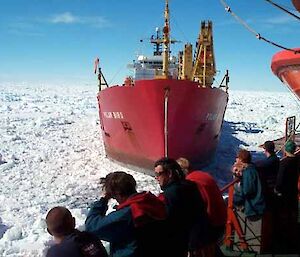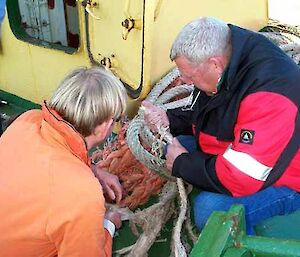18 January 2002
It has been an exciting week here on the Polar Bird which has been beset in the pack ice for some weeks!
Friday the 11th of January saw the arrival of the Aurora Australis (AA), which made a rapid journey from Mawson station to Prydz Bay. It was good to know that we were no longer alone in this harsh and barren landscape.
Friday saw a vast improvement in the weather, with a southeasterly wind promising to loosen the pack ice. At approximately 11.10, the small cracks that had been with us since the previous Monday opened a bit more and Polar Bird slowly manoeuvred under her own power, with the Aurora nowhere in sight, but a small number of her crew and expeditioners were on our bridge.
We were guided gradually through the leads, which were miraculously opening up in front of us. The Aurora Australis began to head towards us and came within three nautical miles of Polar Bird, but then retreated due to bad weather and fear of entrapment.
Unfortunately, the Aurora could come no closer than 10km, ‘choosing not to move’ rather then ‘becoming stuck'.
With the weather closing in and the ice again re-compacting, Polar Bird once again ground to a halt after successfully covering 21 nautical miles.
Saturday greeted us with low cloud and poor visibility, with the Aurora only just visible on the horizon. As the weather improved later in the day, preparations were soon under way to re-locate the ships closer together.
By 1 am local time Sunday, the Aurora was within 300m of the Polar Bird, but due to the extensive thickness of the ice, it was an additional 8 hours before we were adjacent to one another. A cable was then attached to enable the Aurora to tow the beset ship out of the ice.
During this time, the numbers of expeditioners on the decks of the Aurora gradually diminished with far fewer to be seen on the Polar Bird.
Then all of a sudden, the two ships moved closer together than anticipated, the tow rope snapped, and it all looked like it might turn to … ah, into an epic! But with the skills of the crew, Polar Bird was soon moving again under her own power!
Early on Monday morning, the Polar Bird entered ‘open water’ at around 0300, with the Aurora following closely behind.
Monday morning also saw the Chinese research vessel, Xue Long, come into view, providing photo opportunities for all those who were still awake. Midday, and the Aurora Australis was finally removed from us. A thick fog rolled in Monday night, reducing visibility to less than 50m and slowing Polar Bird down to 6 knots.
The expeditioners and crew have been busy. The doctor has been providing the crew with a first aid refresher course each week. We had a Davis slide show on Saturday night, and sporting activities have been organised in the hold. The nightly video tradition is continuing, and sea bird observations have re-commenced on the bridge.
We have now well and truly left the stark brightness of the pack ice behind and are getting used to the greyness of the ocean. For the last few days we have been continually blanketed in a shroud of low cloud, with a small number of bergs in sight and the occasional snow shower. Polar Bird is now motoring at a respectable 13.5 knots (as we only have one engine) and with an ETA of hopefully, midday on January 25th, we should arrive back in Hobart just in time to enjoy the long weekend.
This account is based on a report by Joe Johnson, Voyage Leader of the Polar Bird.




